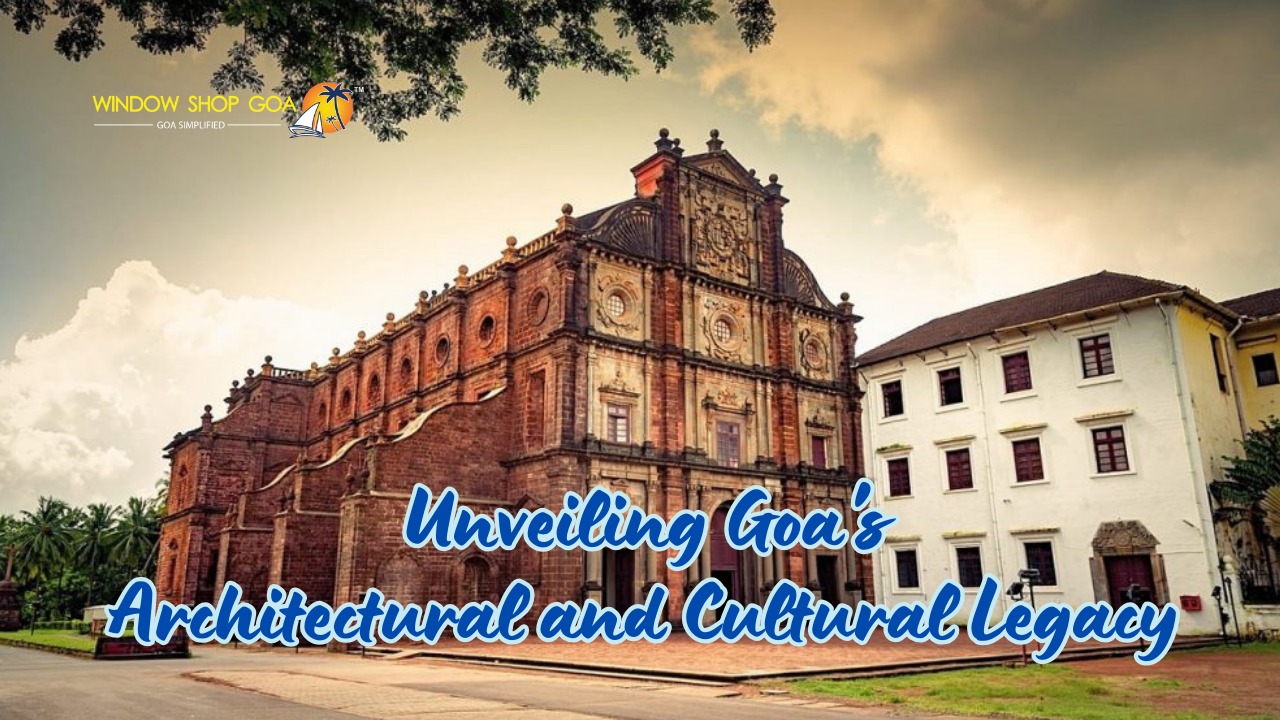Known for its sun-soaked beaches, vibrant festivals, and lively atmosphere, Goa has long been celebrated as a popular tourist destination. Beyond the shimmering coastline and bustling nightlife, however, lies a hidden gem waiting to be explored—the architectural and cultural legacy that shapes the identity of this coastal paradise. In this journey, we delve into the rich tapestry of Goa's history, discovering the architectural marvels and cultural treasures that have withstood the test of time.
Basilica of Bom Jesus: Timeless Spiritual Symbol
Our exploration begins with the Basilica of Bom Jesus, an architectural masterpiece that transcends time. Constructed in the 16th century, this UNESCO World Heritage Site stands as a testament to Goa's enduring spirituality. The basilica is not merely a structure; it is a sacred space housing the mortal remains of St. Francis Xavier. Pilgrims and history enthusiasts alike are drawn to its baroque-style architecture, intricately designed to convey profound religious symbolism. As visitors step into the hallowed halls of the Basilica of Bom Jesus, they embark on a spiritual journey through the annals of Goa's past.
Fort Aguada: A Coastal Sentinel
Perched majestically atop Sinquerim Beach, Fort Aguada beckons travelers to uncover the maritime history of Goa. Built by the Portuguese in the 17th century, the fort served as a crucial defense against invasions, its cannons and well-preserved lighthouse standing as silent sentinels over the Arabian Sea. The strategic importance of Fort Aguada in monitoring enemy movements and safeguarding Goa's coastline unfolds as visitors explore its expansive grounds. Beyond its defensive purpose, the fort offers panoramic views that capture the essence of Goa's coastal beauty, creating an immersive experience that blends history with the serenity of the sea.
Old Goa: Colonial Capital and Religious Melting Pot
A short journey through time brings us to Old Goa, the erstwhile capital of Portuguese India. The cobbled streets of this historical district whisper tales of a bygone era, where colonial charm meets religious diversity. The Se Cathedral, dedicated to St. Catherine, and the Church of St. Cajetan, inspired by St. Peter's Basilica in Rome, showcase the architectural prowess of the Portuguese. Old Goa, with its churches, convents, and museums, paints a vivid picture of the cultural amalgamation that took place under Portuguese rule. Walking through the remnants of this colonial capital is akin to stepping into a living museum, where each cobblestone narrates a story of trade, conquest, and coexistence.
Chapora Fort: Beyond Bollywood Glamour
While Fort Chapora may have gained contemporary fame through Bollywood's lens in the movie "Dil Chahta Hai," its historical significance predates its cinematic stardom. Constructed by the Portuguese in the 17th century, the fort stands as a witness to Goa's historical timeline. Perched on the cliffs overlooking the Chapora River, the fort offers not only a glimpse into military architecture but also a breathtaking panorama of the surrounding landscape. The dilapidated walls and rusting cannons add a touch of authenticity, inviting visitors to connect with a past that extends beyond the realms of popular culture.
Archaeological Museum and Portrait Gallery: Artifacts and Artistry
For enthusiasts of artifacts and art, the Archaeological Museum and Portrait Gallery in Old Goa prove to be a treasure trove. Housed in the convent of St. Francis of Assisi, the museum displays a diverse collection of sculptures, paintings, and manuscripts. From Hindu artifacts predating the Portuguese era to Christian artistry flourishing during colonization, the museum encapsulates the multifaceted heritage of Goa. It serves as a bridge connecting the past to the present, allowing visitors to witness the evolution of Goa's cultural landscape through the lens of art and artifacts.
Shantadurga Temple: A Syncretic Haven
In the predominantly Christian landscape of Goa, the Shantadurga Temple in Kavlem stands as a testament to religious harmony. Dedicated to the goddess Shantadurga, who mediates between Lord Vishnu and Lord Shiva, the temple seamlessly blends Indian and Portuguese architectural elements. The tranquil surroundings and spiritual significance make it a unique destination for those seeking a harmonious fusion of cultures. Visiting the Shantadurga Temple provides not only a glimpse into Goa's syncretic culture but also a moment of serenity amidst the vibrant tapestry of the state's cultural diversity.
Conclusion
As we conclude our journey through the architectural and cultural legacy of Goa, it becomes evident that this coastal paradise is more than just a tourist haven. The historical sites, from the Basilica of Bom Jesus to the Shantadurga Temple, narrate tales of resilience, adaptation, and coexistence. Beyond the stone walls and intricate carvings, the living legacy of Goa resides in its traditions, festivals, and the daily lives of its people.
Discovering Goa's architectural and cultural heritage is not a mere stroll through historical sites; it is an immersive experience that allows visitors to connect with the pulse of a region that has gracefully embraced its past while eagerly stepping into a vibrant future. The legacy of Goa is not confined to monuments and museums; it breathes in the air, echoes in the streets, and dances in the hearts of its people, creating an indelible mark on those who embark on this enchanting journey through time.








Comments